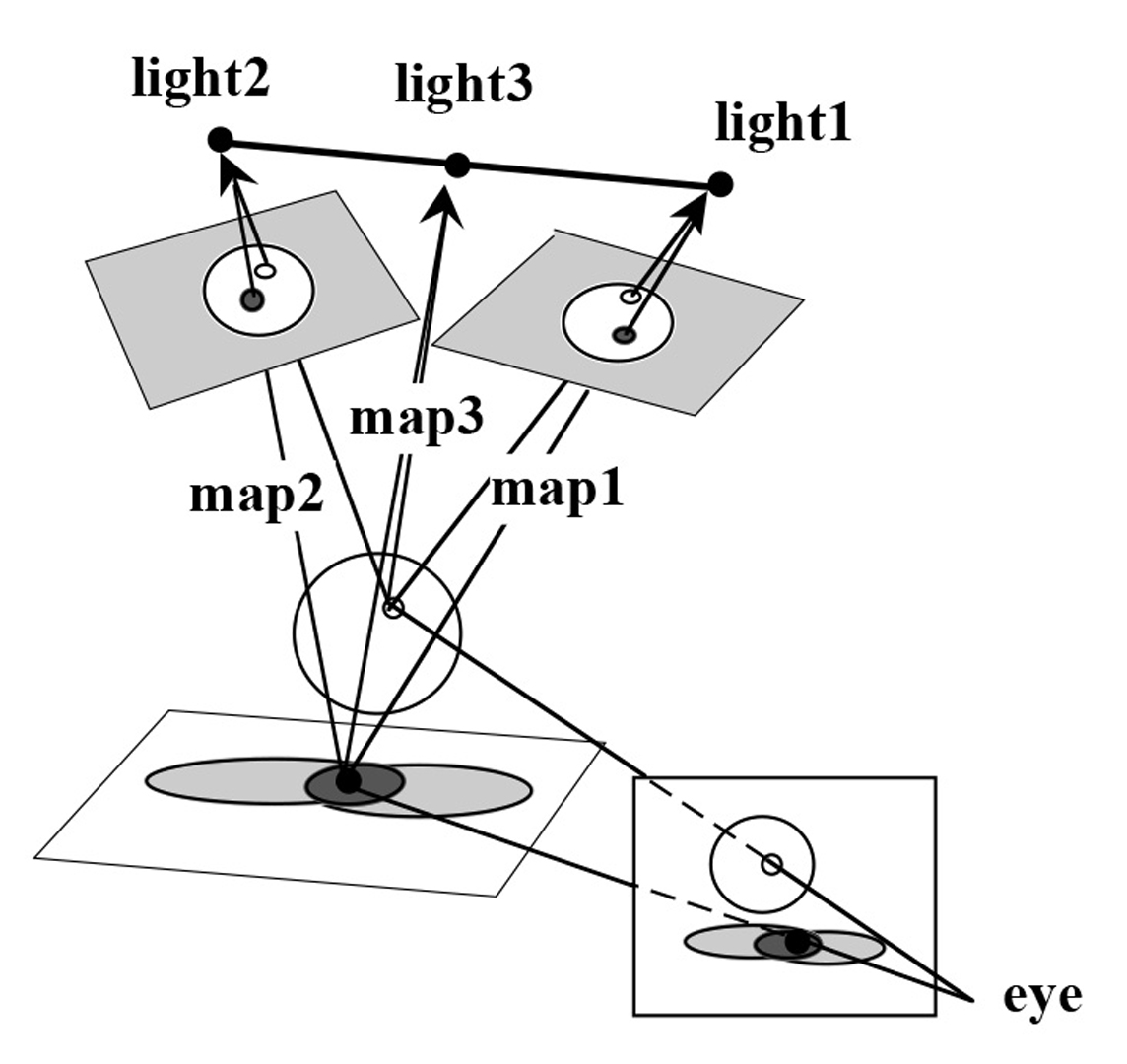“View interpolation for image synthesis” by Chen and Williams
Conference:
Type(s):
Title:
- View interpolation for image synthesis
Presenter(s)/Author(s):
Abstract:
Image-space simplifications have been used to accelerate
the calculation of computer graphic images since the dawn of
visual simulation. Texture mapping has been used to provide a
means by which images may themselves be used as display
primitives. The work reported by this paper endeavors to carry
this concept to its logical extreme by using interpolated images to portray three-dimensional scenes. The special-effects
technique of morphing, which combines interpolation of texture maps and their shape, is applied to computing arbitrary intermediate frames from an array of prestored images. If the images are a structured set of views of a 3D object or scene, intermediate frames derived by morphing can be used to approximate
intermediate 3D transformations of the object or scene. Using
the view interpolation approach to synthesize 3D scenes has
two main advantages. First, the 3D representation of the scene
may be replaced with images. Second, the image synthesis time
is independent of the scene complexity. The correspondence
between images, required for the morphing method, can be predetermined automatically using the range data associated with
the images. The method is further accelerated by a quadtree decomposition and a view-independent visible priority. Our experiments have shown that the morphing can be performed at
interactive rates on today’s high-end personal computers. Potential applications of the method include virtual holograms, a
walkthrough in a virtual environment, image-based primitives
and incremental rendering. The method also can be used to
greatly accelerate the computation of motion blur and soft
shadows cast by area light sources
References:
1. Airey, J., J. Rohlf and F. Brooks. Towards Image Realism with Interactive Update Rates in Complex Building Environments. ACM SIGGRAPH Special Issue on 1990 Symposium on Interactive 3D Graphics, 41-50.
2. Apple Human Interface Group. Object Maker.
3. In Interactive Experience, CHI’92, Monterey CA.
4. Besl, P.J. Active Optical Range Imaging Sensors. Machine Vision and Applications Vol. 1, 1988, 127-152.
5. Beier, T. and S. Neely. Feature-Based Image Metamorphosis. SIGGRAPH’92 Proceedings, 35-42.
6. Chen, S. E. Incremental Radiosity: An Extension of Progressive Radiosity to an Interactive Image Synthesis System. SIGGRAPH’90 Proceedings, 135-144.
7. Cohen, M. F., S. E. Chen, J. R. Wallace and D. P. Greenberg. A Progressive Refinement Approach to Fast Radiosity Image Generation. SIGGRAPH’88 Proceedings, 75- 84.
8. Deering, M. High Resolution Virtual Reality. SIG- GRAPH’92 Proceedings, 195-202, 1992.
9. Goshtasby, A. Stereo Correspondence by Selective Search. Proc. Japan Computer Vision Conf., 1-10, July, 1989.
10. Greene, N. Environment Mapping and Other Applications of World Projections. IEEE CG&A, Vol. 6, No. 11, November, 1986.
11. Greene, N. and M. Kass. Approximating Visibility with Environment Maps. Technical Report 41, 1993, Apple Computer, Inc.
12. Hofman, G. R. The Calculus of the Non-Exact Perspective Projection. Eurographics’88 Proceedings, 429-442
13. Jevans, D. Object Space Temporal Coherence for Ray Tracing. Graphics Interface’92 Proceedings, 176-183, 1992.
14. Lippman, A. Movie Maps: An Application of the Optical Videodisc to Computer Graphics. SIGGRAPH’80 Proceedings, 32-43.
15. Miller, G., E. Hoffert, S. E. Chen, E. Patterson, D. Blacketter, S. Rubin, S. A. Applin, D. Yim and J. Hanan. The Virtual Museum: Interactive 3D Navigation of a Multimedia Database. The Journal of Visualization and Computer Animation, Vol. 3, No. 3, 183-198, 1992.
16. Miller, G.and S. E. Chen. Real-Time Display of Surroundings Using Environment Maps. Technical Report 42, 1993, Apple Computer, Inc.
17. MPEG Video Committee Draft, December, 1990.
18. Nagel, H.-H. Image Sequences – Ten (octal) Years from Phenomenology to a Theoretical Foundation. Proc. 8th ICPR, Paris 1986, 1174-1185.
19. Poggio, T. and R. Brunelli. A Novel Approach to Graphics. MIT A.I. Memo No. 1354, C.B.I.P. Paper No. 71, February, 1992.
20. Reeves, W. T., D. H. Salesin and R. L. Cook. Rendering Antialiased Shadows with Depth Maps. SIGGRAPH’87 Proceedings, 283-291.
21. Schumacker, R., B. Brand, M. Gilliland, and W. Sharp. Study for Applying Computer-Generated Images to Visual Simulation, Technical Report AFHRL-TR-69-14, NTIS AD700375, U.S. Air Force Human Resources Lab., Air Force Systems Command, Brooks AFB, TX, September, 1969.
22. Shapiro, B. L., N. I. Badler. Generating Soft Shadows with a Depth Buffer Algorithm. IEEE CG&A, Vol. 4, No. 10, 5-38, 1984.
23. Teller, S and C. Sequin. Visibility Preprocessing for Interactive Walkthroughs. SIGGRAPH’91 Proceedings, pp.61-69, 1991.
24. Venolia, D. and L. Williams. Virtual Integral Holography. Proc. SPIE-Extracting Meaning from Complex Data: Processing, Display, Interaction (Santa Clara, CA, February, 1990), 99-105.
25. Williams, L. Casting Curved Shadows on Curved Surfaces. SIGGRAPH’78 Proceedings, 270-274.
26. Williams, L. 3D Paint. ACM SIGGRAPH Special Issue on 1990 Symposium on Interactive 3D Graphics, 225- 233.
27. Wolberg, G. and T. E. Boult. Separable Image Warping with Spatial Lookup Tables. SIGGRAPH’89 Proceedings, 369-377.
28. Wolf, P. R. Elements of Photogrammetry, McGraw- Hill, New York, 1983.




